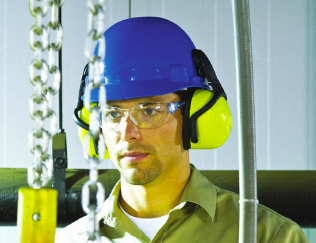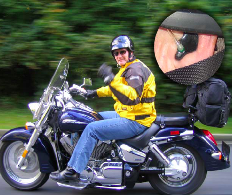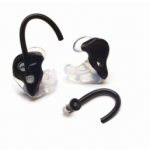Can you get the right answer if you ask the wrong question?
Common sense would dictate that asking how to get to the beach would seldom get you directions to the mountains. Likewise, trying to solve the problem of Noise Induced Hearing Loss (NIHL) by fixing how people choose and put in their hearing protection might be only part of the answer.
Noise Induced Hearing Loss (NIHL) is still a concern.
 Noise Induced Hearing Loss affects, by some reports, 1/3 of the persons in North America working in noise. If 1/3 of the people in New York City had the same malady, you can bet the Centers for Disease Control and Prevention (CDC) would respond. Likewise, the National Institute of Occupational Safety & Health, the CDC’s workplace health and safety arm, has been on the case of NIHL for decades. Regrettably, it is still a real problem.
Noise Induced Hearing Loss affects, by some reports, 1/3 of the persons in North America working in noise. If 1/3 of the people in New York City had the same malady, you can bet the Centers for Disease Control and Prevention (CDC) would respond. Likewise, the National Institute of Occupational Safety & Health, the CDC’s workplace health and safety arm, has been on the case of NIHL for decades. Regrettably, it is still a real problem.
In the last five years, several products have come on the market designed to measure the attenuation hearing protectors give to the people wearing them. These are portable systems to measure the attenuation real people get in their work settings as opposed to measurements in a laboratory. The granddaddy of these systems, FitCheck, has been around since 1994 and has been used extensively by companies like Alcoa to measure how effective their workers are at selecting and inserting effective hearing protection. The problem these systems are trying to resolve is: How do we marry the right hearing protector with an individual and teach him or her to get the attenuation needed for it”
Certainly this is a worthwhile goal provided once the protector is fit, it stays in their ears. Aye, but there’s the rub. Dr. Peter Rabinovitch has studied Alcoa’s hearing conservation program for many years. Dr. Rabinovitch says that “he can see no outcomes in Alcoa’s hearing conservation program attributable to the use of Fit Checking systems”. That’s a lot of teaching and testing for no improvement in reducing NIHL.
Dr. Barry Bessler, in a speech to the National Hearing Conservation Association in 2007 tried to explain why rational, intelligent, normal people would turn up their digital music players loud enough to hurt their ears. Dr. Bessler’s answer was reasoned and complex. One of the points he made is relevant to this conversation. He theorized that our sense of hearing is “hard wired” to our sense of safety. Impair hearing and we don’t feel safe. In wanting to keep “in touch” with our environment, to feel safe, we need to be able to hear. Therefore, if we are using hearing protection it must not block our ability to hear. It must just make it safe to do so. Given that most types of hearing protection substantially reduce our ability to hear our environment, will workers keep these protectors in their ears? The evidence seems to indicate that they won’t.
This brings me back to my original point, in developing systems/machines to measure attenuation are we solving the problem of NIHL. So what we need to do is not worry about how much noise reduction a properly-worn hearing protector may provide if inserted in total compliance with the manufactuer’s instruction. What we need to worry about is whether the protector is providing sufficient noise reduction for the noise in which the wearer works. Instead of using these systems/machines to teach, we should be using them to verify.
FOR EXAMPLE
……………………………………………………………………………………………….
If Joe is is carrying a noise burden of 92 dBA and he needs only 17 dB of noise reduction to be safe and can get a consistent 17 dB of noise reduction from an earplug with an NRR of 33 dB, GOOD! Joe doesn’t have to be taught how to get 33 dB of noise reduction. Or, in the case of a custom earplug, one should be made for Joe that givens him 17 dB of noise reduction.
……………………………………………………………………………………………….
I’m afraid I have my doubts that such a direction will be taken. We need to be talking about making hearing protection as invisible to hearing as safety glasses are to vision. Instead, we have made them as cumbersome as full-face respirators.
In the interest of full disclosure Custom Protect Ear sells and supports the FitCheck and FitCheck Solo attenuation measurement systems. We do so understanding that they can be used as a tool to teach the effectiveness of hearing protection.
 If you have something to add to this discussion, and you will be attending ASSE 2013 in Las Vegas this June, please come by and share it with me.
If you have something to add to this discussion, and you will be attending ASSE 2013 in Las Vegas this June, please come by and share it with me.
Custom Protect Ear is in booth # 551.
If you won’t be there, drop me a line to hearus@protectear.com
Jeffrey Goldberg | President
Custom Protect Ear








